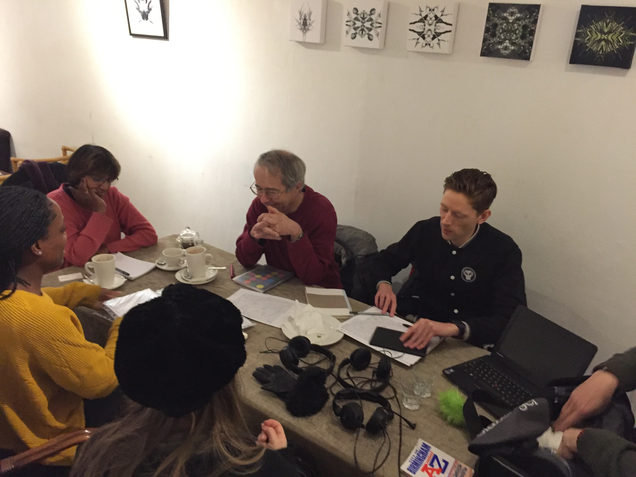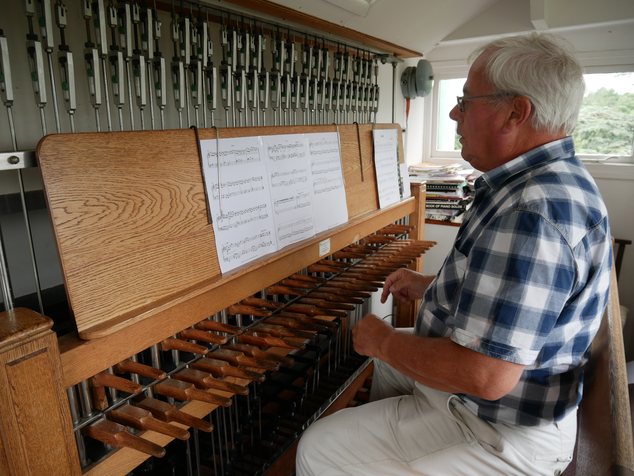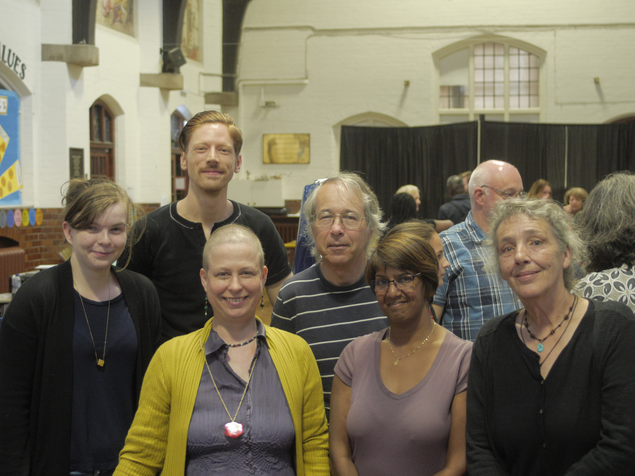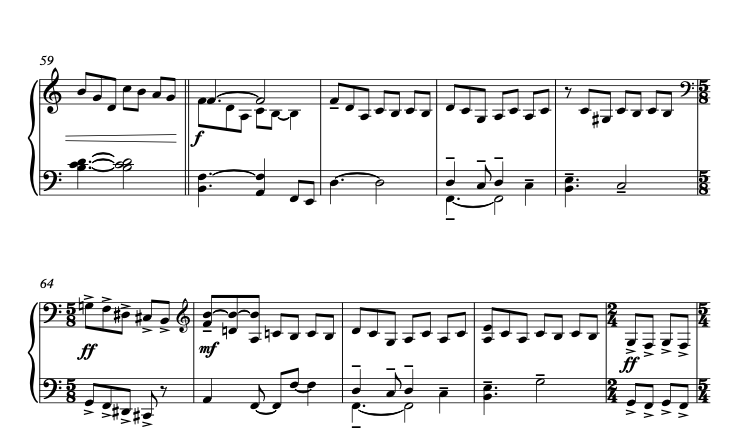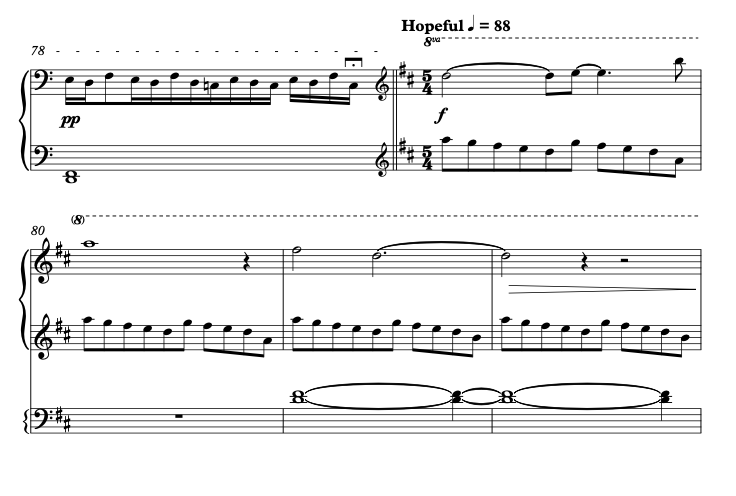Selly Oak District: Hyperlocal Collaborative Composing Methods
In this section I detail hyperlocal collaborative compositional methods I devised to co-create Bournville Chimes, one of the four collaborative works I co-wrote as part of my for-Wards commission, Sweet Selly. Each section of Sweet Selly is co-created with a community group from a ward within Selly Oak district:
1. Birdy - co-written with the Manningford Hall Elders’ Lunch Group in Brandwood ward.
2. Bournville Chimes - co-written with Crunch Creative Writers based at Artefact cafe in Stirchley, Bournville ward.
3. Down the Canal - co-written with Year Seven and Eight students based at University of Birmingham School based in Selly Oak ward.
4. Walking Down a Billesley Street - co-written with Year Five students at Billesley Primary School, Billesley ward.
Sweet Selly premiered on 23rd June 2017.
My first task was to assemble a compositional team based in Bournville ward, which included myself because from July 2015 to December 2016, I lived in Selly Oak district. In Bournville ward I worked with a group of amateur creative writers called the Crunch Creative Writers who gathered together in Bournville ward at the time of the research project.
Pre-Compositional Methods
Pre-compositional activity involved a general survey of Selly Oak district and the four wards it encompassed. The survey included internet searches and trips to nearby libraries that had books on local histories for each ward. I used the survey to uncover noteworthy facts about each area, with the aim of potentially utilising these facts in the creation of each piece. In Bournville ward, I was able to locate literature documenting the worldwide fame of the Cadbury family who developed the area. There was a higher quantity of historical literature regarding Bournville ward compared to the other three wards of Selly Oak, Brandwood and Billesley.
Bournville Chimes clearly demonstrates a hyperlocal and historical thematic consideration in its composition and title. Bournville is the name of the place where the piece is written, and ‘Chimes’ references the sonority and mechanical aspect of the carillon, situated in Bournville for which the piece was conceived. This instrument is discussed in more detail in the Instrumentation section below.
In my third composition workshop with the Crunch Creative Writers, the idea that stimulated the co-creation of Bournville Chimes, was connected to the hyperlocal survey of Bournville’s history. The title of our piece suggests our concern with the area. Bournville’s history and the Cadbury’s enterprise was the most talked about topic in our ideas/pre-compositional workshop. Everyone had a keen interest in George Cadbury’s care of his employee’s welfare and well-being, such as ensuring workers had comfortable housing. However, there was much surprise (and for one collaborator shock) when I shared an experience of attending an art exhibition by visual artist Karen McLean. The exhibition was called Sweet Ethics and is a site-specific installation that 'confronts the way in which philanthropist and businessman George Cadbury is traditionally represented and by extension critiques the ethics of capitalism' (McLean, n.d: online).
Sweet Ethics examines the discrepancies between the Cadbury's treatment of their workers in England and the Caribbean. English employees in the Birmingham factory were given beautiful and individualised houses with gardens. However, in McLean’s exhibition, she recreates (on a Bournville site), a replica of the wooden huts in which the Cadbury’s Caribbean employees resided. My collaborators and I both noted the Cadbury family were Quakers and instrumental in the abolition of slavery. We agreed that the structure of the piece would connect to our agreed perspectives on Bournville’s history.
Compositional Methods
We created a dreamy-sounding opening first section that connected to the Cadbury’s lofty ideology and vision for the treatment of their workers. The use of a D Lydian mode was agreed to achieve this result.
The second section of Bournville Chimes connects to the groups' response to the Cadbury family’s lack of philanthropy regarding their workers in the Caribbean. My collaborators requested the B section needed to be percussive and darker in its mood. This was achieved through a quasi-D minor modality and enters a lower register.
The motif from the A section returns to a D Major-sounding tonality at bar 79. This signals a more hopeful third and final section. This section was a musical response to one of the collaborators carrying out further historical research where they reported the Cadbury family role in the abolition of slavery. The structure and idea for Bournville Chimes were devised collectively. These ideas came about through our discussions in the composing workshops. We did not need to vote for one idea over another, our conversations naturally led to our piece manifesting in this way.
The motif from the A section returns to a D Major sounding tonality at bar 79. This signals a more hopeful third and final section. This section was a musical response to one of the collaborators carrying out further historical research where they reported the Cadbury family role in the abolition of slavery. The structure and idea for Bournville Chimes were devised collectively. These ideas came about through our discussions in the composing workshops. We did not need to vote for one idea over another, our conversations naturally concluded to our piece manifesting in this way.
Field Recordings
The commission brief set for each district-specific composition team (composer and four groups of community composers) involved four sets of field recording (one per ward) as a stipulated task and relates to issues of inclusivity: no one needs to possess knowledge of musical theory or instrumental skills to participate in this activity.
In Selly Oak district, in order to remove the hierarchical notion of the composer as leader or expert – and the community collaborators in a weaker, lesser informed position – in each of the four wards that made up Selly Oak district, the four community groups were asked to be hyperlocal tour guides. The tour guides supported me in viewing the locality through the community group’s eyes and ears. This was to gain insider knowledge and experience the locality as they did. Each of the four hyperlocal pieces co-created had a connection to the field recording experience. In Bournville Chimes, the inspiration behind the musical theme comes from field recording sessions which involved capturing sounds around the Cadbury factory and shop.
Instrumentation
I completed a survey of instruments and existing music ensembles within Selly Oak district, to explore the potential of local musicians performing our hyperlocal work. However, the decision regarding who was to perform the collaborative work was made between my community collaborators and me. Three out of four of my community group collaborators wished to perform our newly composed works. Bournville Chimes is a co-written for the local carillon – which was gifted to Bournville residents by the Cadbury family, qualifying as a hyperlocal instrument. The Crunch Writers and I were unanimous in co-creating a new work for the carillon. One of the writers has a passion for local history and, when they suggested the idea of us composing for the instrument, we all agreed. In response to this information, I contacted a local carillonneur, Trevor Workman, who kindly gave us a tour of the instrument and agreed to perform our collaborative work Bournville Chimes.
